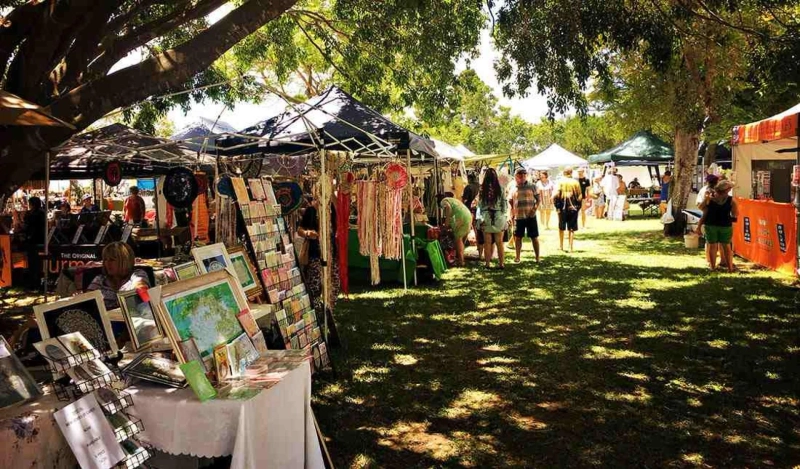Artisan Markets are community-based events that specialize on artisan food and drink, crafts, art, photography, and a wide range of local and regional foods, all of which are sold by the craftsmen themselves. They cater to both residents and visitors, and provide a treasure trove of unique vendors. They are also pleasant, enjoyable, and family-friendly events.
Artisan markets are more than simply places to buy; they are dynamic concentrations of creativity and craftsmanship. These vibrant marketplaces provide a unique glimpse into the different abilities of artists from both local communities and throughout the world. They are the places where each piece of art tells its own tale, woven from strands of tradition, expertise, and intense emotion. Each market booth is a treasure trove waiting to be explored, with everything from carefully made jewelry to handwoven fabrics to custom ceramics and woodwork.
Preserving Traditional Art
Traditional art forms serve as strong witnesses to cultural heritages that transcend generations in these busy markets. These venues are critical for preserving old craftsmanship by displaying things such as indigenous ceramics, tribal weaving, and classical wood carvings. These objects, which are more than just for sale, symbolize the rich histories and stories of entire communities, preserving the essence of cultural identity and heritage in physical forms.
A Fusion of Old and New
In artisan marketplaces, contemporary and modern art styles coexist together. These are melting pots where young artists and established innovators meet to share their distinct perspectives on modern art. This confluence results in a dynamic art environment that is always growing and attractive to a wide range of art enthusiasts. It's a site where old techniques and new aesthetics collide, creating a rich tapestry of artistic expression.
Interactive Art Experiences
Artisan markets are more than just places to glance; they are also hubs for participatory art encounters. Visitors get the uncommon chance to interact directly with artists through seminars, live demonstrations, and hands-on sessions. These connections reveal the intricate processes that go into each item, whether it's the skill of glass blowing, the accuracy of metallurgy, or the romance of textile dyeing.
Festive Art: Embracing the Holiday Spirit
As the Christmas season approaches, local marketplaces shift, embracing the holiday spirit. The surge in popularity of themed art works, notably Christmas paint by numbers kits, is a prominent trend during this time period. People of all artistic talents may enjoy the thrill of making holiday-themed art, adding an individual flair to their festive décor, using these kits.
Beyond Traditional Imagery:
When delving further into this trend, you discover a startling range of paint by numbers kits. For those who enjoy the unusual, skull paint by numbers kits combine the macabre with the serenity of painting. Animal lovers are lured to paint by numbers cat kits because they allow them to immortalize their feline pals in art. Meanwhile, Hawaii paint by numbers kits provide a tropical retreat, enabling painters to recreate landscapes of lush beaches and stunning sunsets.
The Digital Revolution in Artisan Markets
In the modern era, artisan marketplaces are expanding to embrace digital creative forms such as graphic design and digital drawings. This fusion of technology and traditional craftsmanship creates new channels for artistic expression, making art easier to purchase and attractive to a wider audience.
Artisan Markets: A Community of Creatives
Aside from the art, artisan fairs build a sense of community. They are gathering places for artists and art fans to meet, exchange stories, and be inspired by one another. These markets are more than simply commercial spaces; they are dynamic cultural events that celebrate the power of art to bring people together, elicit emotions, and enhance the way we live through interactions between individuals and the universal language of creation.
Art has a significant and complex effect on artisan marketplaces. These marketplaces are more than simply commercial areas; they are cultural centers that foster and display the richness of human inventiveness. They provide a unique venue for artists to sustain their craft and for the public to connect with art in a more intimate and meaningful way by bringing together a diverse range of classic and modern art genres. Artisan markets are critical to the preservation of cultural heritage. They provide a nurturing environment for traditional arts and crafts, ensuring that age-old techniques and tales are not lost in the flow of industrialization. This preservation is critical for preserving cultural variety and educating future generations about the wealth of their past. Furthermore, these marketplaces make a considerable contribution to local economies. They help small enterprises and independent artists, and are sometimes the main source of revenue for many producers. This economic factor is critical in supporting the arts and crafts sector and guaranteeing that artists have the ability to create work. Artisan markets promote community and connectivity as well. They serve as meeting spaces for people from all backgrounds to share their passion for art. This fosters not just a sense of community but also cultural interchange and understanding.
Finally, the value of art in artisan marketplaces cannot be overstated. These marketplaces are critical for maintaining cultural heritage, bolstering local economies, building community, and encouraging diversity. They are bright testaments to art's enduring power and capacity to link us across countries and backgrounds.


